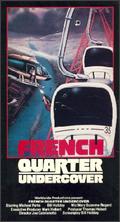You can classify urban Cable Propelled Transit systems in three ways:
The first category are those lines that are integrated into public transit systems. These may be used by tourists, but tourists are not the target market; local weekday commuters are. The Portland Aerial Tram, Roosevelt Island Tram, Medellin Metrocable, Perugia MiniMetro and Caracas Metrocable, for example.
The second category are those lines that are clearly used for non-leisure purposes, but service a more specific subset of tourist and business traveller, both local and foreign. Airport people movers, the Innsbruck Hungerburgbahn and the Mandalay Bay Cable Car are excellent examples of these types of systems.

With this kind of promotional movie tie-in, how could the Mississippi Aerial River Transit not succeed?
The third and final category are Toys For Tourists (TFT) lines. These lines, more often than not, are never actually realized and if they are, rarely survive for very long. TFT lines are never integrated into the local transit network, typically have high (predicted) fares and exclusively target the tourism market.
The Windsor-Detroit Freedom Gondola; the Montreal Telecabine; the Camden-Philadelphia Skylink; the Baltimore Lift; and the terribly-named Mississippi Aerial River Transit system in New Orleans are sad reminders of how not to go about implementing Cable Propelled Transit.
None of the previously mentioned systems were transit. They were, instead, means to generate private sector profits by externalizing at least part (if not all) of the costs onto the public sector. They were rides.
The real shame of these systems was the hubris associated with them. Without fail, each imagined a huge increase in tourism due to the creation of the gondola itself. In other words, predicted revenues were based upon the increased number of tourists the systems’ promoters imagined the gondolas would cause, rather than on the actual number of tourists that actually visited the city.
For years Camden, New Jersey has been one of the poorest, most violent and dangerous cities in all of North America. Ditto Detroit. Ditto New Orleans. With the possible historical exception of New Orleans, how lush do you think the tourist market is in these cities? Do you want to travel there? Does the existence of a gondola change your mind?
The strength of the Portland Aerial Tram, the Roosevelt Island Tram, the Telluride Gondola and any other successful urban CPT system is that the primary users of the systems are locals, not tourists. Tourists should be considered gravy; a nice bit of additional revenue during off-peak hours. But the majority – the meat – of the users need to come from local demographics.
Why this phenomenon only seems to occur in urban, rather than rural/resort regions is a mystery to me, but it nevertheless seems to hold true.

9 Comments
but tourists are not the target market : I’m not surfe to understand…
Not really sure what you’re trying to ask here.